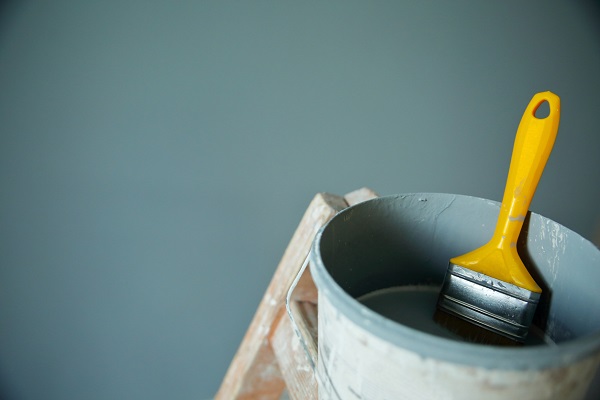
Huffing Paint: Signs and Symptoms
Huffing paint is a method of substance abuse that is usually initiated with an end goal of obtaining a high. It’s speedy euphoric- triggering effect makes it a cost-effective alternative to highly-priced drug options, the likes of nicotine, cocaine, and alcohol. According to the Mayo Clinic inhalant abuse is practiced through a broad range of mechanisms namely: sniffing, bagging, spraying however; huffing is typically associated with paint chemicals.
How Do Users Huff Paint?
Huffing works by spraying or dripping paint onto a rag and directly placing it over your mouth and nose. The toxic fumes then find access into the bloodstream stimulating an exaggerated feeling of ecstasy. Due to its highly absorbent nature, the effects kick in quickly working just as well as conventional drugs. This explains why it is a go-to option for persons originating from destitute backgrounds. A report from the National Survey on Drug Use and Health showed that 527,000 people fell victim to inhalant abuse in 2015, with a majority of this population aged between 12-17 years.
Why Does Huffing Paint Create a High
The ingredient behind heightened emotions is known as toluene. A report from Science Blogs reveals that toluene acts on certain brain cells that are associated with dopamine release. In turn, the activated neurotransmitter works to bring in a surge of great pleasure and joy. Part of the trickledown effect comprises of increased heart rates, muscle strength, and sugar metabolism.
This chemical first travels through the lung system before permeating the red blood cells to invoke stimuli. Silver and gold paints in particular, contain the highest toluene levels thus are comparably more dangerous. On average, 100- 125 death cases are recorded every year as a result of chronic paint huffing. A higher number end up in hospital beds following the same abuse.
How Does Huffing Paint Result in Death
The two main ways in which death occurs are:
- Asphyxiation- immediately toluene comes into contact with the lungs, it compromises oxygen supply levels. In a matter of time, the toxic chemical accumulates within the body outmatching the air and finally leads to suffocation.
- Sudden Sniffing Death Syndrome (SSDS) – this occurs rather abruptly and is equally prone to first-time users. It is associated with sudden heart failure that is prompted by an unpleasant reaction to adrenaline in the body.
Short and Long Term Effects of Huffing
Consequential dangers of long term abuse includes
- Cognitive disorder- this could manifest in the form of mild or severe memory loss.
- Lowered IQ levels such as the inability to concentrate along with impaired judgment.
- Neurological problems due to distortion of the brain’s white cells.
- Extensive liver damage and diseases.
- Rigorous heart complications.
- Kidney failure.
Short- term effects are characterized by:
- Stupor- a state of near unconsciousness brought about by substance poisoning
- General muscle weakness- this tends to be experienced across the limb regions. It is typified by difficulty in moving, a loss of feeling or numbness.
- Belligerence- a display of aggressive or warlike behavior most of the time. This is usually attributed to a false sense of boldness that emerges from the “high feeling”.
- Lethargy- a pathological state of sluggishness and deep inactivity. The user may also fall asleep more times than usual.
Signs and Symptoms of Someone Huffing Paint
According to Medicine Net, some of the common signs and symptoms linked to huffing include:
- Redness around the eye region. This is common to both short and long term users.
- Dizziness and constant lightheadedness. A light faint or pass out may be experienced at times.
- Lack of coordination due to excessive intake. It may also have a link to muscle and nerve damage.
- Dysarthria- this is the slurred change in speed or rhythm while talking. It includes poor word pronunciation and stuttering.
- Irritability and moodiness which is the recipe behind violent mannerisms. When adrenaline levels get too high, it provokes strong emotions and wild behavior.
- Loss of inhibition- this is part of the psychological repercussion which initiates a feeling of seclusion and restrained characteristics.
- Hallucinations and general confusion.
- User reeks of paint chemical odors.
Additional visible pointers that connote to possible abuse involve; leftover paint marks on the user’s face or an unusual record of paint cans within their environs. Painted rags dumped in bins are another indicator. You may also notice regular visits to hardware stores for additional supply.
Modern treatment and huffing intervention methods have been put in place to help deal with addiction. Users are advised to seek professional help so as to end the cycle. Some of the top options to consider are therapy sessions coupled with counseling. These can be one on one settings or group sittings under the guidance of a trained therapist. The activity goes a long way in dealing with cravings and aversion of possible relapses.
Don’t Huff Paint
Huffing paint can get addictive over repetitive use. Its effects are dire and open you up to numerous medical challenges, or even premature death. Urgent treatment options should be considered in an effort to restore prime health.



Add Comment
You must be logged in to post a comment.